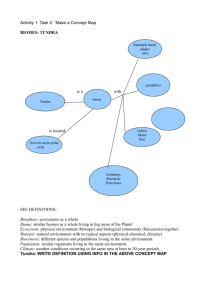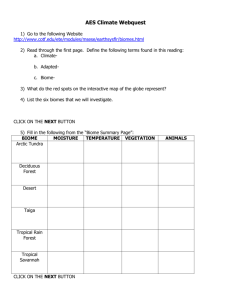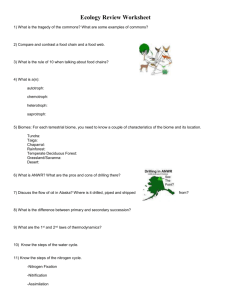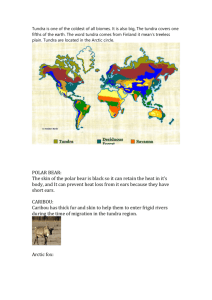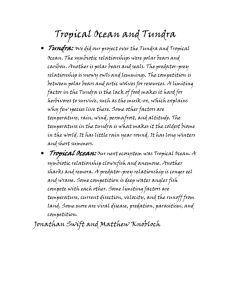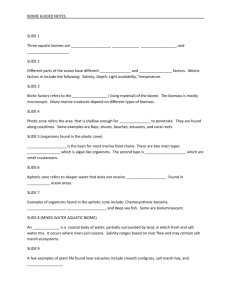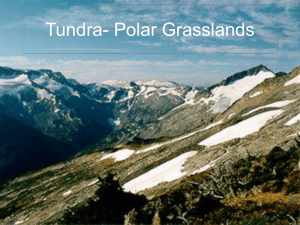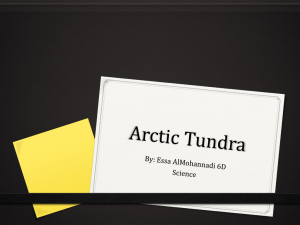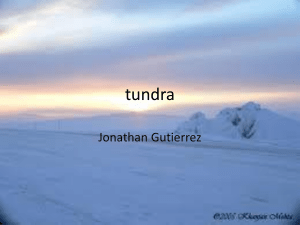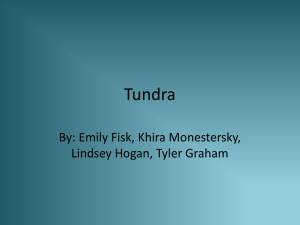The Tundra - TeacherTube
advertisement
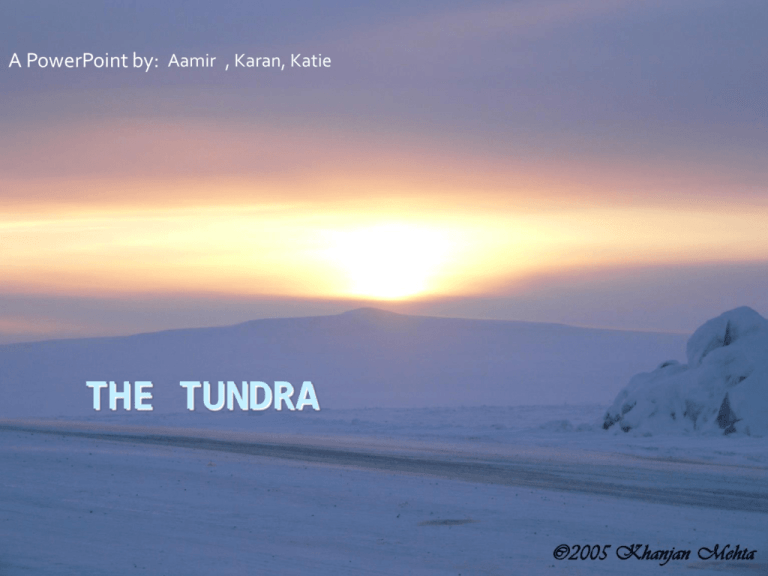
A PowerPoint by: Aamir , Karan, Katie THE TUNDRA The Tundra The Tundra is an icy, freezing biome that is mostly permafrost. It is the world’s youngest biome. There is little vegetation (only about 1,700 different species) There are only 48 species of land mammal in the Tundra. It is one of the Earth's major Carbon Dioxide sinks. Temperature Range The Tundra has a very diverse temperature range. This may be because it is one of the world’s carbon dioxide sinks. A Carbon Dioxide sink is a place on Earth that takes in more Carbon Dioxide than it releases. The temperature range goes like this: Summer: 3°C - 16°C Winter: -70°C – (-56°C) Total Range: -70°C - 16°C Yearly Precipitation The Tundra receives 15-25centimeters of precipitation including melting snow. This causes the tundra to have very short growing seasons. In the arctic, snow hardly ever falls, but when it does fall, it stays frozen until the summer. Where is the Tundra on a world map? Polar Bears Polar Bears have 2 layers of fur. They have thick layers of blubber that are about 11.43 centimeters thick. They have long necks so that they can keep their heads above water while swimming. They have partially webbed feet and lengthy legs, which are adaptations they use to survive. Polar Bear’s fur is actually clear. The sun reflects off of it to make it white. Snowy Owl Their hearing is extremely sensitive Long, pointed, claws help them catch their prey. Like humans, owls can see their prey with both eyes simultaneously. Its long, broad wings help it glide above the ground to catch their unsuspecting prey. Bearberry Bearberries have leather-like leaves. They grow near the ground so the wind doesn’t kill them. Fine, silk-like hairs grow on the plant to help it keep warm. The name “Bearberry” comes from the fact that they are commonly eaten by arctic bears. Arctic Moss Arctic moss is an aquatic plant that lives at the bottom of lakes in the Tundra. When it isn’t growing, it stores nutrients and energy so that new leaves can grow quickly the next spring. They stay out of wind by growing close to the bottom of the lake. Arctic Food Chain Bibliography Antarctic Pass, Alaska. (Image). 21 September 2010. <http://blueplanetbiomes.org > Polar Bear. (Image). 22 September 2010. <http://blueplanetbiomes.org > “S. Whitney”. Tundra. Blue Planet Biomes. 2002. Web. 21 September 2010. <http://www.blueplanetbiomes.org > Snowy Owl. (Image). 22 September 2010. <http://blueplanetbiomes.org > T., Travis. “Snowy Owl.” World Biomes. N.p. N.d. Web. 21 September 2010. <http://blueplanetbiomes.org> The Tundra. (Image). 22 September 2010. <http://www.google.com> “The Tundra Biome”. The World’s Biomes. N.p. N.d. <http://www.ucmp.berkely.edu >
